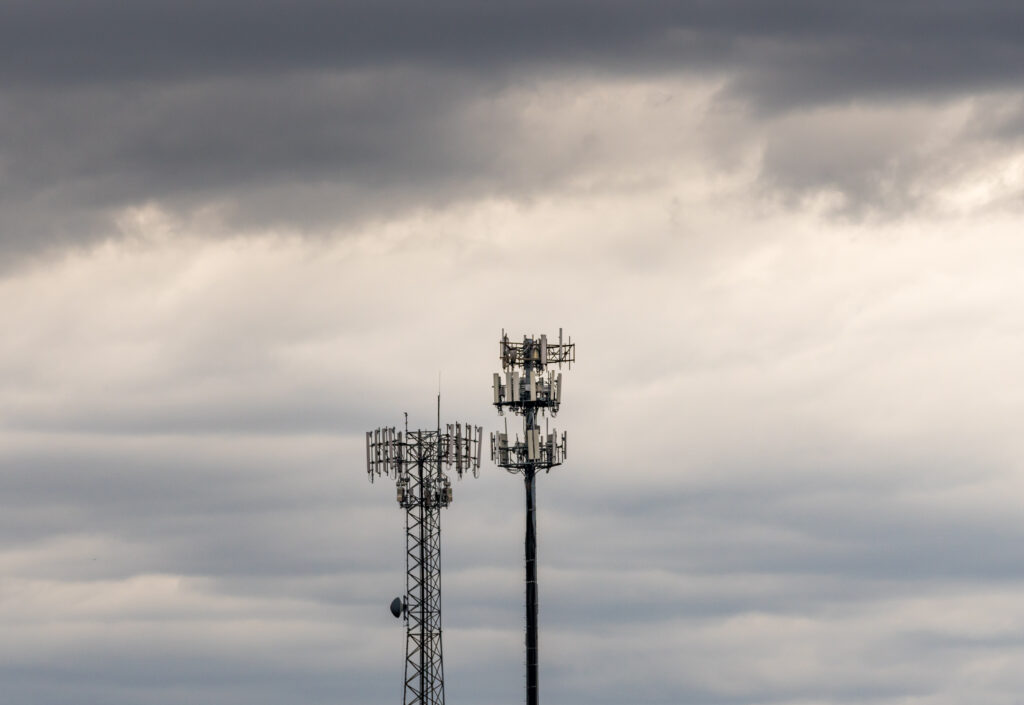
Two towers providing cellular broadband and data service to rural areas on stormy day. (Photo via Getty Images)
As people wait for new high-speed internet to get installed along power lines or beneath the ground, New Mexico’s broadband agency wants to use public funds to cover some of the cost of getting high-speed internet from space.
The New Mexico Office of Broadband Access and Expansion on Tuesday asked the Legislative Finance Committee for $70 million to help cover the cost of connecting to satellite high-speed internet. The committee makes budgetary recommendations to the full Legislature.
About 95,000 households in New Mexico are either too remote to receive high-speed internet or do not have the money to pay for it, said Drew Lovelace, the broadband office’s acting director.
Those include parts of Albuquerque but also more mountainous or remote areas in the eastern and western parts of the state, Lovelace said.
Over a five-year period while high-speed internet lines are built, the money would pay for a $600 satellite receiver to get connected, along with $30 toward the $120 total monthly bill. The program is called Accelerate Connect New Mexico.
The only satellite internet provider in the market right now with satellites close enough to the planet’s surface to do high-speed internet is Starlink, Lovelace said. There are other companies with satellites farther away into space, but as far as he’s aware, none of those provide a fast enough connection speed.
Starlink is owned by billionaire Elon Musk, who has been tapped by President-elect Donald Trump to lead a not-yet-defined commission to evaluate government spending.
Sen. Benny Shendo (D-Jemez) asked Lovelace about what he thinks could change with the new presidential administration, especially since Starlink “used to have the inside track on these conversations.”
Lovelace responded in part by saying federal money for high-speed internet is already obligated to the state of New Mexico, and it would take an act of Congress to change that.
“There’s a lot we can think about and prepare for — what’s nice to think about with infrastructure is that whether you have an R or a D behind your name, if you do not have connectivity, you want connectivity,” Lovelace said.
Lovelace said according to data Starlink has shared with his office, there are only about 200 places in New Mexico that couldn’t get satellite coverage. As an example, he said, those places might be too deep within a valley for the signal to reach.
If the Legislative Finance Committee includes the requested money in the state budget for Fiscal Year 2026, and lawmakers vote to pass the budget, the money would become available to the agency in July 2025.
Lovelace said it would take another six months to hire a satellite high-speed internet provider and actually start the program.

